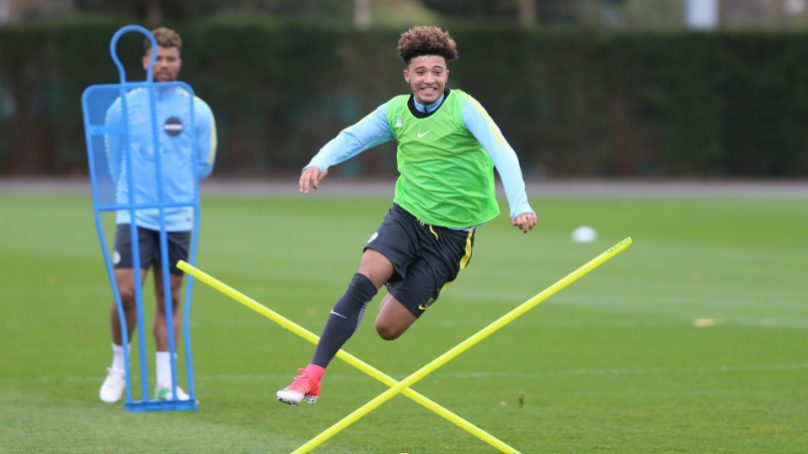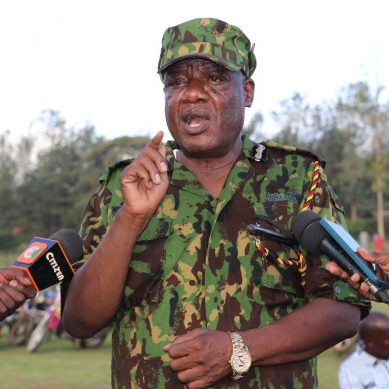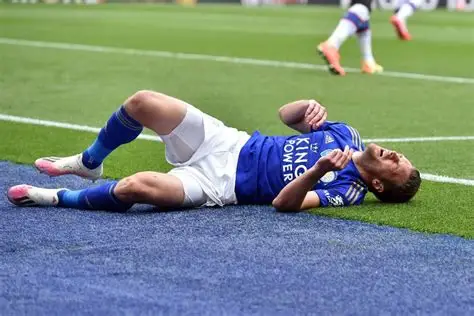
A thorough strength and conditioning programme can help level this out but without one, physical-performance coach Mathew Banks says imbalanced players would be at risk of hip and back pain.
It turns out journalist Eduardo Tansley is the opposite of that, with stronger hips than groin muscles. On the downside, he has a large asymmetry (37 per cent) between his left and right calf muscles and a smaller one between his left and right hips, both of which show a deficiency on his right side (most practitioners look for a difference of less than 10 per cent).
“It’s a common pattern, where deficits occur together,” Banks says. “When we look at your counter-movement jump and the eccentric force application that’s likely linked to the fact that the right calf and hip are underperforming, meaning you can’t stabilise your hip and produce force efficiently. That asymmetry would be the main area we’d target first – tidying up those imbalances.”
The outcomes from these tests with footballers fall into one of four categories, says Banks, with strong and symmetrical taking top spot, strong and asymmetrical the next level down, then weak and symmetrical and, at the bottom, weak and asymmetrical.
While the focus of Eduardo’s session has been on lower-body strength, Banks says they will also do trunk capacity testing with some players (“when they’re in a side plank with someone sitting on their legs; left and right, front and back”) and shoulders-based testing with goalkeepers or players who have a history of injuries in that area of the body.
No bench-press competitions between players then? Former Wycombe Wanderers striker Adebayo Akinfenwa is said to have been able to bench press 180 kilogrammes (400 pounds), with Fulham winger Adama Traore at 150kg and Portugal superstar Cristiano Ronaldo around 120kg.
“Upper-body strength is still quite important for footballers, but it’s not going to be a performance limiter,” Banks says. “A lot of the perceived upper-body strength in footballers comes from what position their feet are in. It’s about your relationship to the ground and how you distribute your forces.
“I once worked with a player who couldn’t have weighed more than about 60 kilogramme but he was impossible to move off the ball because he was so good at distributing his weight. And his arms were… well, if you called them twigs it would be harsh on twigs.”
The final part of Eduardo’s testing is all about speed, an area of the game that has become increasingly important.
According to Opta, Tottenham Hotspur centre-back Micky van de Ven was the fastest player in the Premier League last season, reaching a top speed of 23.07 miles per hour (kilometres per hour). He was followed by Manchester City midfielder-turned-right-back Matheus Nunes (22.82 miles per hour), then Nottingham Forest and now Newcastle United forward Anthony Elanga (22.78 miles per hour), Brentford forward Bryan Mbuemo, now of Manchester United (22.76 miles per hour) and Wolves winger Carlos Forbs (22.72 miles per hour), who joined Club Brugge this summer.
To test Eduardo, Banks asks him to complete three lots of 10 metres (just under 11 yards) accelerations that, because of our location at Pennyhill Park, are done on a hard-surface tennis court instead of grass.
In normal circumstances, Banks says this would involve 10 metre sprints one way, turning and dashing back 5 metres, so he could observe the player’s ability to change direction at pace, but the court we were using didn’t lend itself to that, so Eduardo was doing straight sprints.
Banks sets up his phone on a tripod to record Eduardo’s efforts. He will then use an AI-driven movement analysis tool called VueMotion to gather data on every intricate detail of the way Eduardo moves and his running economy. Athletes would then receive a detailed report including graphics and graphs, to help them understand what’s working well and what needs improvement. The athletes’ data then gets compared to normative information collected from Speedworks, a company run by renowned performance consultant Jonas Dodoo.
Eduardo gets an overall speed score of 50 out of 100, which places him right in the middle of the population that 292 Performance test. That number is made up of his raw scores (his 10 metres time of 1.93s and his peak velocity of 4.1 metres per second, both of which gave him a score of 41), and his running economy, which looks at three key elements: projection (how far forward he projects himself), switching (how quickly and aggressively he switches his legs down and back, and reactivity (how stiff and responsive he is when he hits the ground).
Then comes the granular biomechanical detail. Hip displacement (how far his hips travel), step frequency (how many paces he takes), thigh angular velocity (the angle and speed his thigh moves through) and step velocity (the speed he is travelling at during each stride) are all noted. There’s also a step-by-step analysis, which provides an understanding of the symmetry between limbs, with each individual pace given a colour code (green indicating a step is done well, red if it’s done badly).
“When we look at these elements together – acceleration, strength, and symmetry – we get a much clearer picture of what we need to work on, not just from a strength point of view, but also in terms of speed and change of direction,” Banks says.
With his testing over, Eduardo leaves pretty satisfied with how he has matched up to the elites overall.
This kind of testing is something Banks says he would do every week as part of the gym programme at a club. Working on a private basis with players, he aims to get it done around every six weeks (though more regularly if something is being worked on specifically). It ensures the footballer’s exercise plan is working in the way that it should and ultimately, that players are as robust as they possibly can be at a time when they are being physically pushed to their limits.
“The physical demand of the game is increasing as are the physical qualities of players,” says Banks, “but if you have an accident in your car at 100 miles per hour versus 30 miles per hour, the damage is going to be significantly different. Things are just getting faster and the volume is increasing. So when things do go wrong, they’re getting a bigger issue because it’s happening at a significantly higher level.”
How fit do you have to be to play in the Premier League, then?
Like we said at the top, it’s complicated.
- A Tell Media report / Adapted from The Athletic







